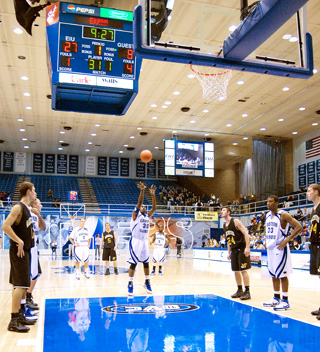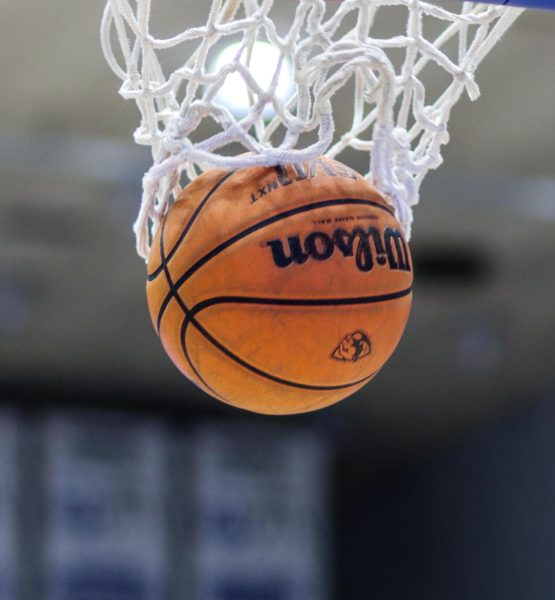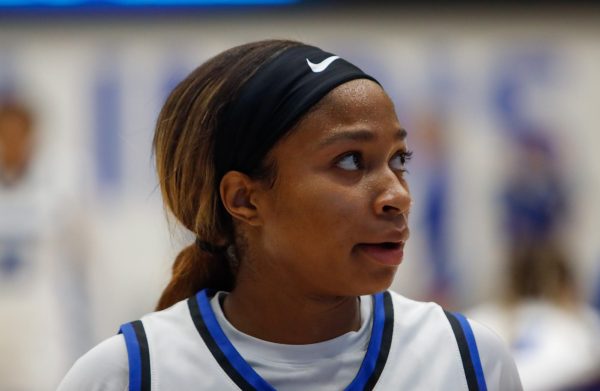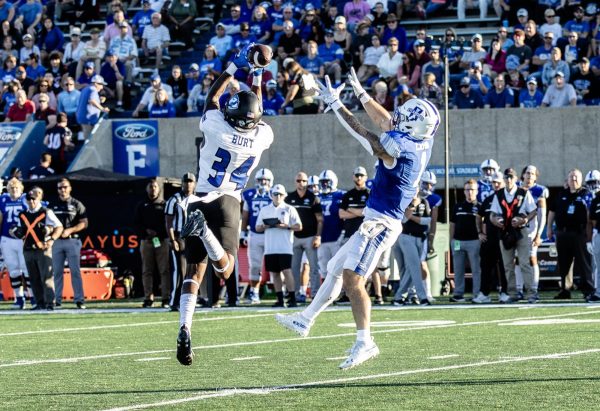Transfers may sit out, NCAA says
Junior college transfers have a large effect on Eastern’s athletic programs.
This year’s men’s basketball team features four players, including two starters, who began their playing careers at a junior college.
The women’s team stars red-shirt junior guard Dominique Sims, who was on the Ohio Valley Conference’s All-Newcomer Team last season after transferring from a junior college in Texas. Likewise, the current baseball team has eight junior college transfers.
Players who transfer from junior colleges fill up rosters for basketball, football and other sports teams across the country.
However, that all may change if the NCAA implements a rule change that would require junior college athletes to sit out a year before joining a Division I program.
On Nov. 12, USA Today reported the NCAA is looking into this rule change based on the fact junior college athletes are most likely to become academically ineligible and leave their new schools.
This, in turn, would hurt schools’ Academic Progress Rates and subject these schools to scholarship cuts and other sanctions.
The story reported the NCAA’s Academic Cabinet is aiming to get the rule in place by 2010.
Eastern coaches were unaware of the pending rule change likely because talks are in preliminary stages. But they shared, for the most part, the same sentiments.
“I don’t see any good reason for it,” Eastern baseball head coach Jim Schmitz said. “It would affect some good people, and they’ve made it harder for students to get in to begin with. This would just make it even harder for them to get in.”
Eastern women’s basketball head coach Brady Sallee said while he was unsure if this potential rule change would affect his sport or if it would be based on a sport-by-sport basis, he thought the sweeping generalization was unnecessary.
“From a women’s basketball standpoint it’s really by an individual basis,” Sallee said. “We’ve had kids who, whether they’re from junior colleges or right out of high school, that have done really well or struggled. It just depends on the kid. I’d hate to see the NCAA label a whole division as being that kind of a student. You have to look at kids on an individual basis. To put a rule in like that would be short-sighted.”
Eastern head football coach Bob Spoo said while he didn’t have much information on the subject, it didn’t seem like something he would be in favor of.
“It doesn’t seem fair,” said Spoo, who only had one player on this year’s roster who transferred directly from a junior college. “If they already had to spend two years at a junior college coming out of high school, they were probably a non-qualifier. I’m not really sure where they get their figures.”
The USA Today story stated the NCAA conducted a study during the 2006-07 academic year that showed roughly one in 19 NCAA athletes were junior college or community college transfers.
Additionally, one in six athletes in football and men’s basketball started out at a junior college. One in every nine of these athletes wound up in poor academic standing, according to the same NCAA report. If the NCAA does implement a rule change requiring junior college transfers to sit out one year before participating in an NCAA institution, it’s likely schools’ recruiting practices would change drastically.
“I don’t think they’d be recruited by anybody,” Schmitz said. “If you’re the basketball coach at a school like North Carolina or Illinois and you only have so many scholarships, why would you give one to someone and have them sit on your bench for a year? This is just one of those ideas where someone came up with an idea that they thought was great and it doesn’t pan out.”
Collin Whitchurch can be reached at 581-7944 or at cfwhitchurch@eiu.edu.
Transfers may sit out, NCAA says

Junior guard T.J. Marion shoots a free throw during the game on Nov. 19 in Lantz Arena. According to a proposed NCAA rule, incoming junior transfers such as Marion may be forced to sit out one season by 2010. (Dave Rigby





































































